Starr's out tonight.
The second volume of Mary Perkins: On Stage from Classic Comics Press arrived in the mail a couple of days back and I stopped everything to read it all the way through, breaking only for meals and other life-necessities. I really do love the work of Leonard Starr on that strip, which ran from 1957 to 1979. I discovered it quite late in its run, because it never appeared in Britain. I remember following it in the NY Daily News, its home turf, when I was in Brooklyn for a couple of weeks in 1975.

A Few days back I made reference to the different ways old newspaper comic strips are nowadays presented. I suppose you could oversimplify it and say there is the nostalgia camp and then the Comics-are-ART camp, and I’m leaving out the mass market here, that still has a place for Garfield and The Far Side. Both camps long ago decided to kick out the whole soap-opera photorealist genre from the ‘canon.’ Old time comics historian Bill Blackbeard dismissed the whole lot as ‘dismal talking head soaps’ in The Comic Strip Century that Kitchen Sink Press published. He would have liked comics to stay forever the way they were in... the early '40s(?). In the Art camp, John Carlin just ignored the whole subject in the historical survey in Masters of American Comics. I’ve already cut up the first of those books so that it exists in my collection in pieces, and the Masters book is starting to feel like going the same way. Having denigrated it I should give an example of the kind of nonsense in it that annoys me.
“Hogarth’s sequential narratives and later studies such as The Analysis of Beauty consolidated the graphic experiments of earlier prints and established a complex language of graphic devices that artists have borrowed from ever since.
I have a book of Hogarth’s complete prints; I believe i'm a perceptive reader, but I honestly don't know what Carlin is saying. If anything, Hogarth was trying to hold onto a tradition that was fast disappearing, a tradition of picture making and viewing that involved a very complicated reading of symbols. There is no modern pictorial idiom that works that way. Carlin’s writing represents a kind of historiography that is of late considered bogus, this making a continuous narrative out of art so that one thing must be seen to clearly point the way to the next thing. It is considered thus because it tends to lead to false conclusions. The notion that artists stand on the shoulders of a bigger man before them so that they can see further than the bigger man is one of those metanarratives of which postmodernity chooses to be be incredulous.
These Mary Perkins books themselves have the look of having been incubated in the first camp, the nostalgia one. They are glue-bound and delighfully commonplace and unfussy in their appearance and the typesetting in the introductions is utilitarian, all just like this kind of book used to be twenty years ago. The stories, well, if you haven’t encountered the strip before, see Dirk Deppey’s review of Vol 1 from spetember last, or this other chap here who has fallen in love with Mary. The memory and copies of the strip have survived intact due in no small measure to guys like David Apatoff, who wrote a great piece about Starr on his blog. The last time I referred to him in this blog I may have called him a cranky old geezer, or described him as belonging to the 'flat earth school of art scholarship', head in the sand hoping that when he pulls it out modernism will have gone away. And I wrote what I wrote knowing full well that I would probably need to sing his praises a little further down the line..
My purpose here is to point to two or three aspects of the 'Photo-Realist style', as prof Mendez terms it, in his excellent work on the subject, which somebody must publish in book form! He has three pages on the strip under discussion which would make an excellent monograph just by themeselves.1,2,3, as well as pages on all the other major exponents of the style: Raymond, Drake, Kotsky etc. He has a wonderful survey of the advertising art of the period too, and shows how this connects with the style in the strips. Goddamn it, somebody publish it so I can stop trying to find my way around the peculiar design of his site.
Anyway, what I like. Days like this one from Oct 1957 (in volume 1). I was looking for a model for having figures just talking to each other, with body language carefully noted. Starr was a big influence on my thinking in that direction. Note how both characters appear in all three panels. They start facing, and end with their backs to each other.

The 'talking building' has been much scorned by the 'Vertigo generation', replacing it with the more cinematic 'voice over'. Bring it back, I say. Interestingly, there are two talking buildings in this one sunday, from the mid-seventies which can be seen entire on the Mendez site.

I love the way that, while the main characters always have a high degree of idealization in their depiction, there are so many nicely observed individuals among the secondary characters. The artist is obviously photographing his friends for reference.

After discussion with Classic Press publisher Charles Pelto I intend to write an intro for an upcoming volume of the series in which I'll talk about a lovely 1968 colour sunday tearsheet which I had professionally photographed many years ago so that I could keep it pristine forever, back before I realized that forever is bogus.

A Few days back I made reference to the different ways old newspaper comic strips are nowadays presented. I suppose you could oversimplify it and say there is the nostalgia camp and then the Comics-are-ART camp, and I’m leaving out the mass market here, that still has a place for Garfield and The Far Side. Both camps long ago decided to kick out the whole soap-opera photorealist genre from the ‘canon.’ Old time comics historian Bill Blackbeard dismissed the whole lot as ‘dismal talking head soaps’ in The Comic Strip Century that Kitchen Sink Press published. He would have liked comics to stay forever the way they were in... the early '40s(?). In the Art camp, John Carlin just ignored the whole subject in the historical survey in Masters of American Comics. I’ve already cut up the first of those books so that it exists in my collection in pieces, and the Masters book is starting to feel like going the same way. Having denigrated it I should give an example of the kind of nonsense in it that annoys me.
“Hogarth’s sequential narratives and later studies such as The Analysis of Beauty consolidated the graphic experiments of earlier prints and established a complex language of graphic devices that artists have borrowed from ever since.
I have a book of Hogarth’s complete prints; I believe i'm a perceptive reader, but I honestly don't know what Carlin is saying. If anything, Hogarth was trying to hold onto a tradition that was fast disappearing, a tradition of picture making and viewing that involved a very complicated reading of symbols. There is no modern pictorial idiom that works that way. Carlin’s writing represents a kind of historiography that is of late considered bogus, this making a continuous narrative out of art so that one thing must be seen to clearly point the way to the next thing. It is considered thus because it tends to lead to false conclusions. The notion that artists stand on the shoulders of a bigger man before them so that they can see further than the bigger man is one of those metanarratives of which postmodernity chooses to be be incredulous.
These Mary Perkins books themselves have the look of having been incubated in the first camp, the nostalgia one. They are glue-bound and delighfully commonplace and unfussy in their appearance and the typesetting in the introductions is utilitarian, all just like this kind of book used to be twenty years ago. The stories, well, if you haven’t encountered the strip before, see Dirk Deppey’s review of Vol 1 from spetember last, or this other chap here who has fallen in love with Mary. The memory and copies of the strip have survived intact due in no small measure to guys like David Apatoff, who wrote a great piece about Starr on his blog. The last time I referred to him in this blog I may have called him a cranky old geezer, or described him as belonging to the 'flat earth school of art scholarship', head in the sand hoping that when he pulls it out modernism will have gone away. And I wrote what I wrote knowing full well that I would probably need to sing his praises a little further down the line..
My purpose here is to point to two or three aspects of the 'Photo-Realist style', as prof Mendez terms it, in his excellent work on the subject, which somebody must publish in book form! He has three pages on the strip under discussion which would make an excellent monograph just by themeselves.1,2,3, as well as pages on all the other major exponents of the style: Raymond, Drake, Kotsky etc. He has a wonderful survey of the advertising art of the period too, and shows how this connects with the style in the strips. Goddamn it, somebody publish it so I can stop trying to find my way around the peculiar design of his site.
Anyway, what I like. Days like this one from Oct 1957 (in volume 1). I was looking for a model for having figures just talking to each other, with body language carefully noted. Starr was a big influence on my thinking in that direction. Note how both characters appear in all three panels. They start facing, and end with their backs to each other.

The 'talking building' has been much scorned by the 'Vertigo generation', replacing it with the more cinematic 'voice over'. Bring it back, I say. Interestingly, there are two talking buildings in this one sunday, from the mid-seventies which can be seen entire on the Mendez site.

I love the way that, while the main characters always have a high degree of idealization in their depiction, there are so many nicely observed individuals among the secondary characters. The artist is obviously photographing his friends for reference.

After discussion with Classic Press publisher Charles Pelto I intend to write an intro for an upcoming volume of the series in which I'll talk about a lovely 1968 colour sunday tearsheet which I had professionally photographed many years ago so that I could keep it pristine forever, back before I realized that forever is bogus.
Labels: classic strips(1), hogarth
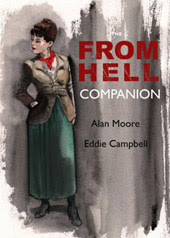
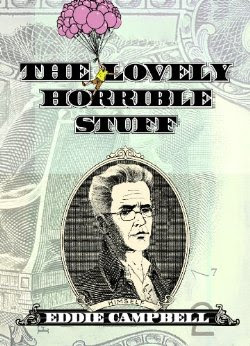

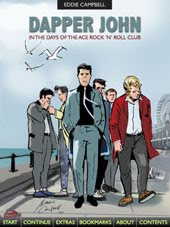
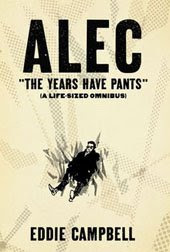
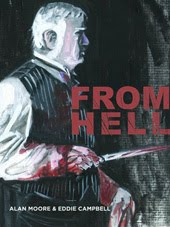
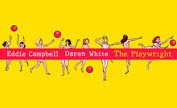
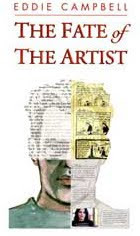


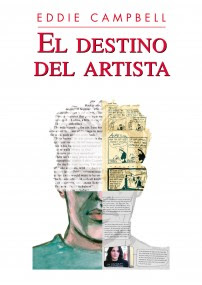
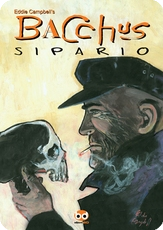
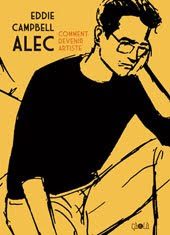

17 Comments:
"Forever is Bogus"
Sounds like the best Bond film ever.
It seems like almost every day lately, I learn about another 'classic' (ie. old) cartoonist of interest whose published works I can't afford to buy. Oh well -- Leonard Starr, is it? Right, onto the list, Leonard.
If you do more entries about artists you admire and/or have been influenced by, I shan't complain. (Ideally with more and bigger pictures.)
will be stealing "forever is bogus" from you immediately, don't worry, it's going to be hilarious every time.--mza.
I live here in the USA, and was never familiar with the strip. Nice art.
The newspaper comic strip is all but extinct here.
What's it like elsewhere? Europe, Australia? I think back on how popular were such strips as Dick Tracy, L'il Abner, Pogo, Prince Valiant, etc. Millions of people used to read these things! Now, no one gives a good goddamn. Of course, newspapers are fading and Americans don't bleeding read at all.
I think Mary Perkins On Stage is beautifully drawn, but haven't read enough to really get into it.
Maybe that guy talking about Hogarth meant that he influenced a lot of artists: comic artists, at least.
But, by "disappearing tradition" are you referring to "Symbol Books" and stuff (those old religious manuals and woodcuts for people who didn't read, filled with rebus pictures to remind you of Bible verses, etc.) ???
Hogarth's famous print series' made me think of Bill Elder, with all the "eye kicks" or marginal jokes (not jokes, really, in Hogarth, but references people at the time would understand)
James,
newspaper comics have had it everywhere. Yup. I do love the old ones. The artists i love most are not being collected much however, like Tad Dorgan for instance.
jack
I thought of quoting a page explaining one of Hogarth's prints but it would be a lot of typing. most of it is stuff that the modern reader couldn't guess at, not just the references, but the whole way of 'reading'.
Thierry Smolderen in Comic Art issue 8:
"...the opacity of most old prints... the resistance they oppose to modern reading, is an excellent indicator of the real issue: not so much what happens in the picture as how we are meant to read it."
And this wasn't for people who were illiterate. Hogarth's prints didn't come cheap and the reading of them required a level of education.
The satirical prints of the next generation got much more low down and dirty and that was one of the things Hogarth resisited, that and the influx of the gifted amateur into the medium. Hogarth was a qualified professional engraver and saw that as important. The comics field is only interested in Hogarth because he made a few prints in series form. While that is worth passing mention, I feel it's an insult to Hogarth to make that out to be something important in and of itself.
Thanks, don't type in pages. I can go look it up. I love Hogarth, Gillray and Rowlandson, all those old cats.
Had the impression the prints were stuck in windows of the printing shops, which became like public bulletin boards.
ps
Bill
thanks for commenting. I've noticed your own blog a couple of times while i was casting about trying figure out how one ought to run one of these things.
best to you
Eddie
One of my teachers at the Kubert school, Phillip "Tex" Blaisdell, was Starr's background artist on On Stage. The originals from the strip he brought in to show us were just heartbreakingly well drawn. The had this glossy, unattainable perfection to them- a sense of effortless sophistication that left my classmates and I feeling like a bunch of buck-toothed farmboys at a Milan fashion show.
Tex put up a dismissive front when we raved about what he did ("You just throw a photo in the swipe-o-graph and drag a pen over it.") but catch him off-guard and you'd get a glimpse of a genuine craftsman's pride in the work. Then he'd tell you a story about him, Drake, and Starr boozing up and stripping naked on the golf course while doing Tarzan yells.
Mercury
I was trying to figure out who you are... bit of detective work... Paul Guinan!
great to hear from you... was talking with you in san diego just last... what? six months ago? where'd it go?
best to you
Eddie
Eddie,
I couldn't agree more about the prof. Mendez site -- I had the very same thought when I came across it three or four years back. I am actually in the formative stages of putting together a publishing venture and have thought about contacting him to see if he'd like to collect the site's material in book form. Have you had a any dealings with him yourself?
Joe
Joe,
I exchanged a few emails with Armando Mendez a couple of years back. great fellow. I know he does vsualize the whole thing as a book and I believe he may have had some interest from a publisher (don't know which) at some point but i don't know what the current state of play is. Please do contact him. I presume there's a contact function at his site as that's the only way I would have contacted him myself. I know he has a lot more than is on show there as he shared a couple of other essays with me. All excellent work.
Eddie
It's not not Paul Guinan, (though he just left the room)- it's Steve Lieber. The Mercury Studio account is shared by roughly a dozen artists, but it's usually me using it.
Steve!
okay, that fits. I remember you reccommending the profmendez site some where, tcj maybe.
If so many people love this kind of work, you'd think we'd have more of it back in print by now.
(in English)
I've got a pile of Juliet Jones books in Spanish
Eddie
My depressing suspicion is that the usual comp list of professional cartoonists would eliminate most of their potential sales. Still, one can dream.
SL
An excellent collection indeed . Looking forward to future volumes.
I remember "On Stage" in the newspaper when I was growing up. I always liked the art, but it wasn't until I was around 13 or 14 (let's see, that'd be... 1973-ish) that I got pulled in by the storylines. I guess I'll have to wait a few years before the reprints get to the point where I start to feel nostalgic. ;)
Post a Comment
Subscribe to Post Comments [Atom]
<< Home